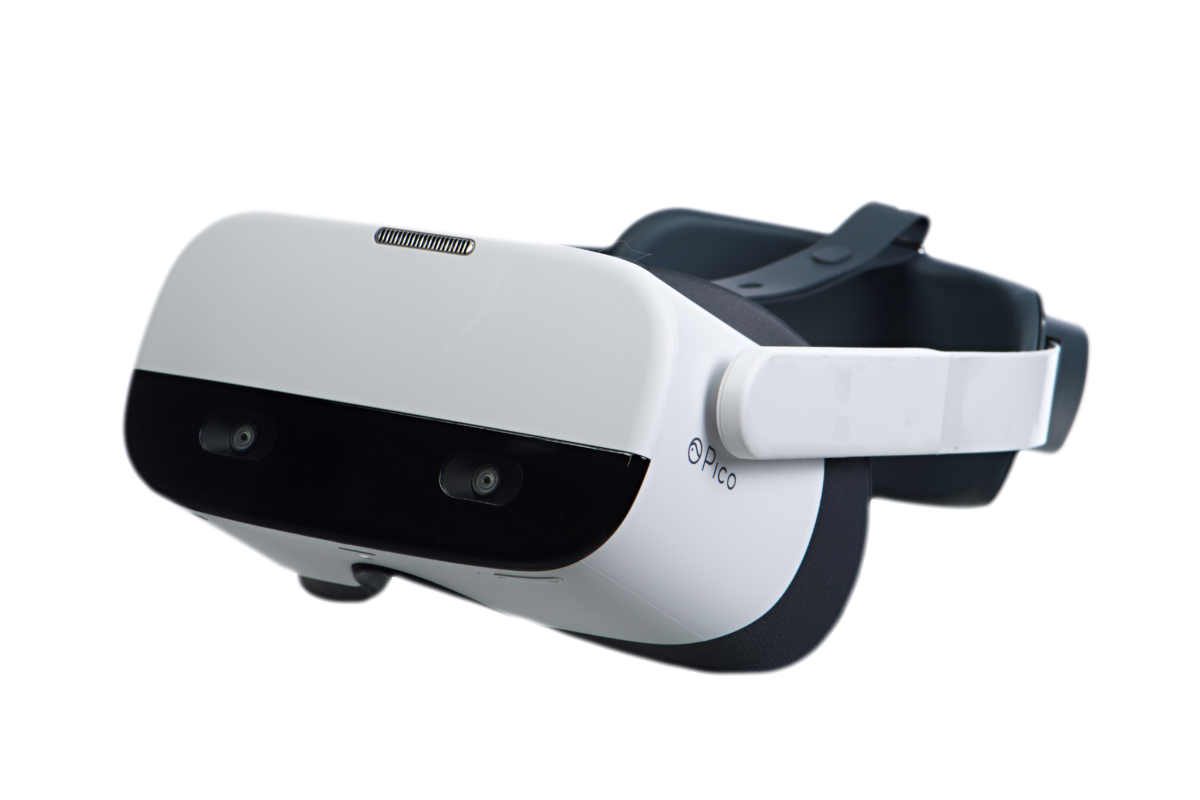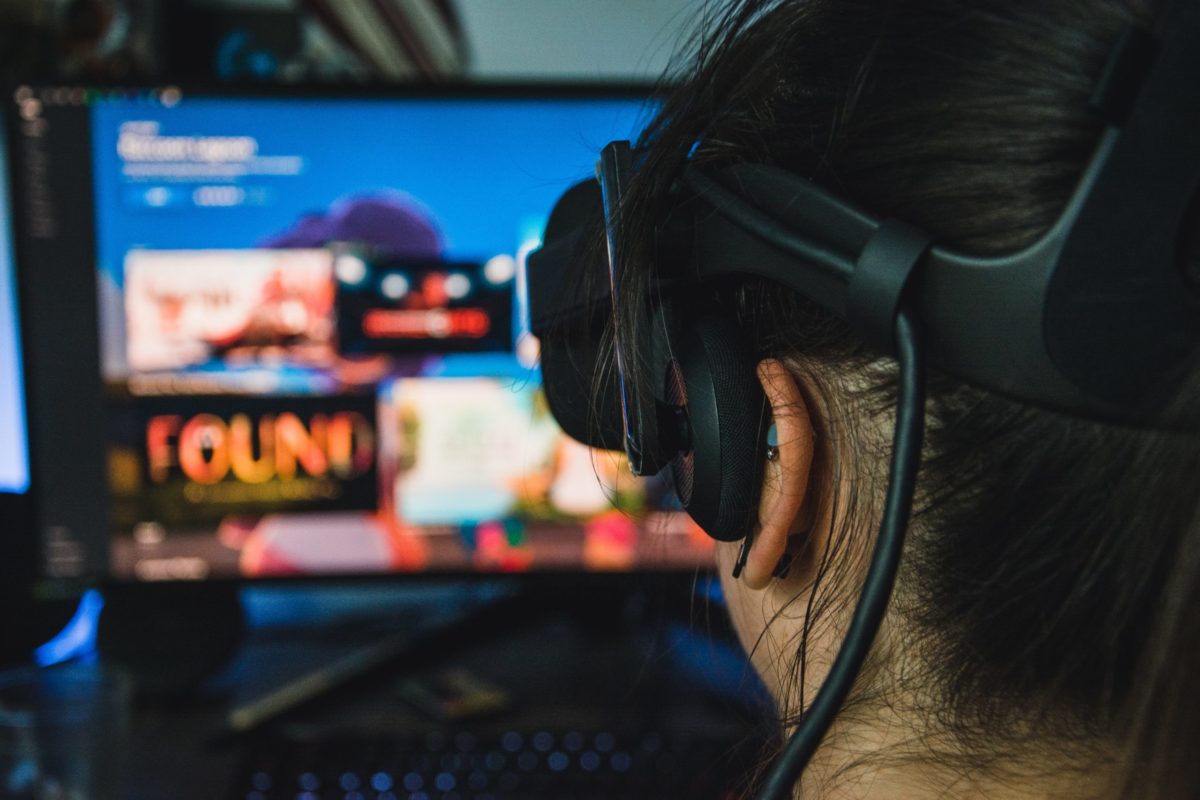While VR, AR, and MR are related, they are not interchangeable — each brings a unique value to training content for organizations, often in the manufacturing sector, making up the larger umbrella term, Extended Reality (XR).
Mixed Reality (MR) combines elements of virtual and augmented reality technologies, allowing us to merge parts of the physical world, (the world we actually exist in), and digitally-created virtual worlds. It relates to any technology capable of combining virtual and real-world environments.
Augmented Reality (AR) uses computer-generated overlays to superimpose data or digital objects on top of our physical, real-world environment.
Finally, Virtual Reality (VR) allows users to interact and be fully immersed in an artificial, computer-generated, three-dimensional environment.
The three technologies each use their own discrete devices to produce their unique experiences and effect, such as fully enclosed headsets (for VR), glasses (for enterprise-grade AR and some MR), or even just smartphones, (for simpler forms of AR; the Pokemon GO game is a good example of this more basic consumer AR experience.)
MR: An emerging reality for Manufacturing Training
As the newest XR technology, (in fact, even the very definition of “MR” varies from publication to publication), Mixed Reality (MR) incorporates both AR and VR elements, making it a potentially ideal application for use in the manufacturing sector. With MR, digital objects are superimposed on the physical environment, like in AR.
The difference? In MR, this overlaid content spatially interacts with real-world objects, (like it would in a fully simulated VR environment), rather than simply “floating” on top of them, allowing both physical and virtual worlds to mingle in real-time.
This dynamic interaction can be especially valuable for industries already leveraging the concept of the “Internet of Things” (or ‘IoT’), or “Industrial Internet of Things”, (or ‘IIoT’), and intelligent modeling technologies.
Both AR and MR are closely related to Virtual Reality (VR) with areas of technology and application crossover. For example, some XR headsets simulate the physical environments while supplementing additional artificial objects through MR or AR.
Virtual content’s built-in advantages that combine immersion, precise scenario recreation or randomization, real-time feedback, replicable tasks, increased efficiency — and the hard data that ties it all together — make it easy to see why Extended Reality content is a game-changer for the manufacturing sector, either for training or any other remote work or collaboration use case.
Further, the adaptability of MR content, (or any XR content), makes it a natural fit for all learning styles, whether visual, auditory, reading/writing, or kinesthetic motion.
Ready to implement, no development time needed
While PIXO’s growing ready-made content library provides content with applications for all industries, one of our focus areas is in providing off-the-shelf XR training content for organizations in the manufacturing sector. Let’s look at some of our more popular content.
Lockout/Tagout
Trainees learn OSHA-compliant Lockout/Tagout procedures beginning with the initial preparation phase, right on through to the restoration phase, with the machine once again in safe operating order.
Working within a simulated 3D Virtual Reality environment, trainees can move about, unobstructed, and inspect machines from all possible angles and physically interact with functional machine and equipment components such as levers, buttons, and valves.
In the final Lockout/Tagout assessment mode, trainees have an opportunity to test their knowledge by applying everything they’ve learned to “real” life, on-the-job scenarios within the XR environment.
Machine Introduction
A comprehensive understanding of how new machinery works is crucial to user safety and production optimization.
Machine operation training content allows users to quickly and effectively learn the often complex operational usage processes in a guided step-by-step tour. Trainees complete their preparation, having gained valuable, real-world, hands-on practice using the new machinery before using the machine on the job.
Not only does this help increase efficiency, but it also eliminates productivity losses that accompany taking machines offline to make them available for training purposes.
By working with PIXO designers, companies can supply their own CAD data for specific devices and equipment, which can then be virtualized for immersive 3D environments. (It should be noted: this process requires some amount of customization, making Machine Introduction a little less “off-the-shelf” than other titles in our content library, which are immediately ready for use — “plug and play”.)
Hazard Recognition
With VR hazard recognition training, organizations can train up to dozens of employees simultaneously, in a single virtual environment — from any endpoint in the world.
Whether mastering how to don personal protective equipment (PPE) properly or identifying and correcting potentially millions of randomized hazards, including improperly stored HazMat, defective scaffolding, misplaced equipment, even missing footboards and improperly sized hand rails on elevated surfaces, trainees can interact, explore, and collaborate using multi-user functionality. With Hazard Recognition, mistakes become vital learning opportunities, occurring in real-time, in a risk-free virtual environment offering in-depth scoring and analytics.
Ladder Safety
Learning proper ladder usage has never been safer. Trainees learn how to accurately survey a work area, isolate potential hazards, and determine the correct ladder for the task, including material and height. Trainees learn how to inspect their ladder for damage, correct markings, etc., properly determine if it is safe for use for their intended purpose, deploy, and demonstrate proper ladder usage techniques.
When carried out in the safety of a virtual environment, trainees learn, hands-on, the impact of even slight miscalculations or oversights without damage to property or risk of potentially deadly personal injury.
XR training content: off-the-shelf and ready to go — anywhere, anytime
With PIXO’s extensive, off-the-shelf XR training, companies can train on universally important and required skills across multiple sites, potentially worldwide. Gone are the logistical nightmares of planning training tours in multiple cities or different countries, including travel visas, transportation and accommodation costs, transport of sensitive equipment or training materials, room or training facilities, or time spent offline at onsite training locations.
Critically, productivity levels are easily maintained by reducing employee downtime while delivering accelerated learning, leading to enhanced in-field decision-making accuracy and improved trainee satisfaction.
Intuitive analytics to provide real-time feedback
Businesses wanting to fully implement VR, AR, or MR (or all of the above!), will quickly find they need a comprehensive system for accessing, distributing, and managing it all remotely. Without it, employees who need training content can’t easily access it, training managers can’t properly contextualize and analyze it within their existing LMS systems, and administrators can’t effectively distribute and manage it.
Without the right distribution and analytics platform, the efficiency and simplicity of XR can take a major hit, and leave companies stuck in a proof-of-concept phase, hindering widespread adoption and delaying the realization of XR technology’s full value.
PIXO Apex is a groundbreaking content distribution, management, and analytics platform created specifically to make any kind of XR content more scalable and accessible than ever before.
Our extensive “off-the-shelf” XR cloud-based content library offers convenience, adaptability, and accessibility, putting content in the hands of those who need it when they need it, anywhere in the world.
And with an easy-to-use, customer-facing dashboard, Apex’s in-depth analytics give you the ability to collect, sort, and view in-depth, SCORM-compliant data in real-time.
PIXO: Evolve Your Workforce
Organizations like yours are already using XR training programs to improve specific departments — particularly hiring and onboarding.
Off-the-shelf XR, VR, AR, and MR technology can make the hiring process easier for accessing remote or international talent pools. It can offer all potential employees a realistic glimpse of what working at your organization is like through virtual office or equipment tours, baseline and soft skills assessments, and more. Further, XR increases all-important collaboration opportunities, supporting the development of cohesive teams, regardless of their physical location.

PIXO Has Improved VR Management to One Easy Step

